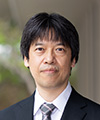 |
|||||||||||||
|
|
|||||||||||||
|
Feature Articles: Efforts in the Environmental and Energy Sector to Create a Sustainable and Resilient Society Vol. 22, No. 3, pp. 49–55, Mar. 2024. https://doi.org/10.53829/ntr202403fa5 Zero Environmental Impact Technology to Achieve a Clean and Sustainable SocietyAbstractTo contribute to achieving zero environmental impact, NTT Space Environment and Energy Laboratories is engaged in research and development of new forms of energy, efficient and resilient energy transport, and effective absorption and conversion of carbon dioxide (CO2). This article introduces virtual energy demand/supply control technology that makes the most effective use of renewable energy, next-generation energy supply technology that uses a direct current (DC) grid using reliable DC power supply, and oceanic CO2 reduction technology that uses the ocean food chain, which will all contribute to achieving carbon neutrality. Keywords: zero environmental impact, sustainable, carbon neutral 1. Virtual energy demand/supply control technologyVirtual energy demand/supply control technology (Fig. 1) is used to enable local production and consumption of renewable energy by adjusting power consumption through appropriately arranging workloads to be processed using information and communication technology (ICT) equipment installed in NTT telecommunications buildings distributed throughout Japan across time and space. In cooperation with NTT Network Service Systems Laboratories and the NTT Network Innovation Center, this technology is being established and tested [1].This technology consists of many elemental technologies, such as forecast of renewable energy generation, electricity-demand forecasts per building and per workload, and various forecasts related to ICT resources, optimization of energy demand and workload deployment based on the forecasts, and workload control technology to obtain the optimization result. We have verified the functionality of newly developed elemental technologies at a single site. To verify the effectiveness of this technology, we constructed a verification environment in fiscal year 2022 in which two sites approximately 1 km apart are connected by a 10-Gbit/s line.
We defined the workload as the central processing unit (CPU) and memory load applied to nine virtual machines (VMs) that provide a virtual desktop service. These workloads were moved between sites while service was running (live migration), and the evaluation was carried out in terms of energy, services, and operations. Through experiments, we quantitatively determined the relationship between load conditions, the time taken to move workloads, and adjustable power consumption. For example, when all VMs are under heavy load (CPU usage 85%, memory usage 80%), 107 W of power consumption can be adjusted, which is about 35% of the server power consumption (270 W). Note that it took approximately 90 seconds from the start of the VM move to its completion, and during that time, there was almost no effect on the virtual desktop service from the user’s perspective (Fig. 2).
This verification was conducted on two servers. By applying this technology to a large number of servers, power consumption may be adjustable on a large scale by moving workloads. In the future, we will examine feasibility by moving workloads over longer distances and at multiple sites. We will also examine the scalability of each elemental technology in parallel. 2. Next-generation energy supply technologyNext-generation energy supply technology uses safe and reliable direct current (DC) power feeding technology to enable effective use of renewable energy and flexible power interchange without power failure even in times of disaster. The severity of natural disasters has been increasing, and the resilience of new forms of power interchange urgently needs to be improved for preserving the global environment and improving energy self-sufficiency. To solve this problem, we are researching and developing an outdoor DC power feeding system for DC microgrids (Fig. 1). A feature of this system is its reliability because the storage battery is directly connected to the power line and the power feeding system does not require electronic components that may fail. By taking advantage of its reliability, we are studying a system that connects a telecommunications building with storage batteries and multiple customers with renewable energy via power lines and that uses 380 VDC to provide power in both directions, focusing on electrical safety. In the first step in this study, we verified the basic characteristics and safety of electric power supply in a star wiring system that connects a telecommunications building to each customer on a one-to-one basis [1]. For the next step, we are studying a bus wiring system. While bus wiring is more economical than star wiring in terms of the cost of laying power lines, if a short circuit (the positive and negative power lines come into contact) occurs at a certain point, a large current may flow through the entire system, causing power failure. For example, if a fuse is simply inserted to protect a short circuit in the bus wiring shown in Fig. 3(a), a power failure will occur in the bus wiring. Because the direction of the short-circuit current through the bus wiring changes depending on the short-circuit point, the current at short-circuit point B (green arrow) can be blocked by the nearest fuse (ii) to the short-circuit point, but the current at short-circuit point A (red arrow) can be blocked due to the malfunction of a fuse other than the nearest fuse (i) to the short-circuit point. Therefore, overcurrent protection coordination*1 between fuses cannot be achieved, and multiple fuses may operate simultaneously, resulting in the system shutting down. Even if the direction of the short-circuit current changes, the circuit breakers need to cooperate to protect against the overcurrent and maintain the power supply of the users other than the short-circuit point. To solve this problem, we installed one bidirectional semiconductor circuit breaker (SCCB) at each trunk line and branch line of the bus wiring, which can set the overcurrent-cutoff threshold for each direction of current, and clarified the conditions for this threshold. As shown in Fig. 3(b), a bidirectional SCCB is installed in the bus wiring, and the overcurrent-cutoff threshold is set to gradually decrease in the direction of power supply from one customer to another. Each bidirectional SCCB consists of unidirectional SCCBs connected in series in the opposite direction and features an overcurrent-cutoff threshold for each current direction. As shown in Fig. 3(b), when there is a short circuit at point B, only SCCB (ii) operates quickly and disconnects the short-circuit point. This is because SCCB (ii) has the smallest overcurrent-cutoff threshold in the direction of the short-circuit current and is the SCCB closest to the short-circuit point. Similarly, when a short circuit occurs at point A, SCCB (i), the closest to the short circuit, disconnects it. In this case, only the SCCB close to the short-circuit point operates at the other points C, D, E, X, Y, and Z as well, and the short-circuit point is disconnected. Therefore, when a short circuit occurs at any point in the bus wiring, only the SCCB immediately adjacent to the short-circuit point is shut off. This minimizes the area affected by the power failure during the short circuit and improves the reliability of the bus-wiring power feeding system.
In the future, we will research and develop a system that does not lose power during a short circuit even when the trunk line is a loop-wiring type. We will also contribute to enabling flexible, safe, and secure power feeding by further improving the reliability of the power feeding system.
3. Marine-food-chain-based CO2 reduction technology in the ocean and its applicationsGlobal warming has become a serious international issue. Since carbon dioxide (CO2) in the atmosphere is considered to cause global warming, the need to reduce CO2 in the atmosphere is urgent. According to the 6th Assessment Report by the Intergovernmental Panel on Climate Change (IPCC), the ocean accounts for 35.1% of CO2 absorption. The amount of CO2 absorbed by the ocean mainly depends on the concentration of CO2 dissolved in seawater. Therefore, it is expected that if CO2 in the ocean is decreased, the amount of CO2 absorbed from the atmosphere to the ocean will increase, which will lead to a decrease in CO2 in the atmosphere. In the ocean, algae*2 fix CO2 through photosynthesis*3. Fixing refers to the process of converting CO2 into organic compounds and incorporating it into living organisms. These algae are then directly or indirectly preyed upon by fish and shellfish in the food chain, eventually leading to the fixation of carbon within the bodies of the fish and shellfish. NTT is currently focusing on this carbon fixation process through the marine food chain to decrease CO2 in oceans (Fig. 4). Specifically, NTT aims to enhance both the carbon fixation ability of algae and the feeding/growth abilities of fish and shellfish by using gene modification technologies such as genome editing*4. NTT also aims to optimize cultivation conditions to maximize and prolong the total amount of carbon fixed throughout the marine food chain. It is believed this research targeting algae as well as fish and shellfish can solve the problem of short-term carbon fixation faced by traditional algae-related studies. NTT, in collaboration with Regional Fish Institute (RFI), a pioneer in fish-species improvement using genome editing technology, is advancing research towards synergistically reducing CO2 in oceans by using the marine food chain. NTT is striving to improve the carbon fixation capability of algae; working on selecting target genes, and developing and evaluating productive strains by applying genome editing technologies.
While the carbon fixation mechanism of algae has long been studied, the genes involved in carbon fixation have not been fully clarified. Therefore, we first selected genes expected to enhance carbon fixation capacity. One method for evaluating gene function is to observe the proliferation of a single-gene-modified strain under specific conditions. For instance, since the activity of photosynthesis generally decreases in low CO2 environments, the growth of algae slows when cultured under such conditions. If an algal strain, modified by removing a certain gene A, proliferates significantly more under low CO2 conditions than the unmodified strain, gene A may function to inhibit carbon fixation under low CO2 conditions (top of Fig. 5). If genome editing technology is applied to gene A, a resultant algal strain will likely show improved carbon fixation ability under low CO2 conditions.
At NTT, we applied the aforementioned gene function evaluation method and narrowed down the genes involved in carbon fixation by varying the CO2 concentration during cultivation. We first obtained genetically modified strains for each of the 12 candidate target genes then evaluated the proliferation of these strains. We found that genetically modified strains related to two types of genes (genes 4 and 8) proliferated significantly more than the unmodified strains (bottom of Fig. 5). This greater proliferation suggests that more CO2 is being absorbed and fixed per unit time. In other words, the application of genome editing to genes 4 and 8 may dramatically increase the amount of CO2 absorbed by algae. On the basis of the discovery of genes 4 and 8, we aim to breed algae strains with improved carbon fixation capabilities. Moreover, by identifying more target genes and applying genome editing technology, we are committed to not only breeding strains with high carbon fixation abilities, such as photosynthetic activity, but also breeding strains that have industrial benefits, such as the accumulation of useful substances. To implement this research in the real world, NTT Group, using useful algae breeding technology and telecommunication technology, along with RFI’s state-of-the-art shellfish-species-improvement and aquaculture technologies, established a joint venture company, NTT Green & Food (G&F) on July 1, 2023 [2]. In accordance with the philosophy of “Making the most of nature’s bounty with technology and designing the future of the earth and food,” G&F aims to develop the Green & Food business composed of three axes: (i) production and sale of environmentally friendly algae, (ii) production and sale of environmentally friendly fish and shellfish that feed on these algae, and (iii) provision of a circular land-based aquaculture platform using these algae and shellfish. NTT will continue to advance technology for breeding and producing useful algae toward the establishment of the Green & Food business.
References
|
|||||||||||||



















